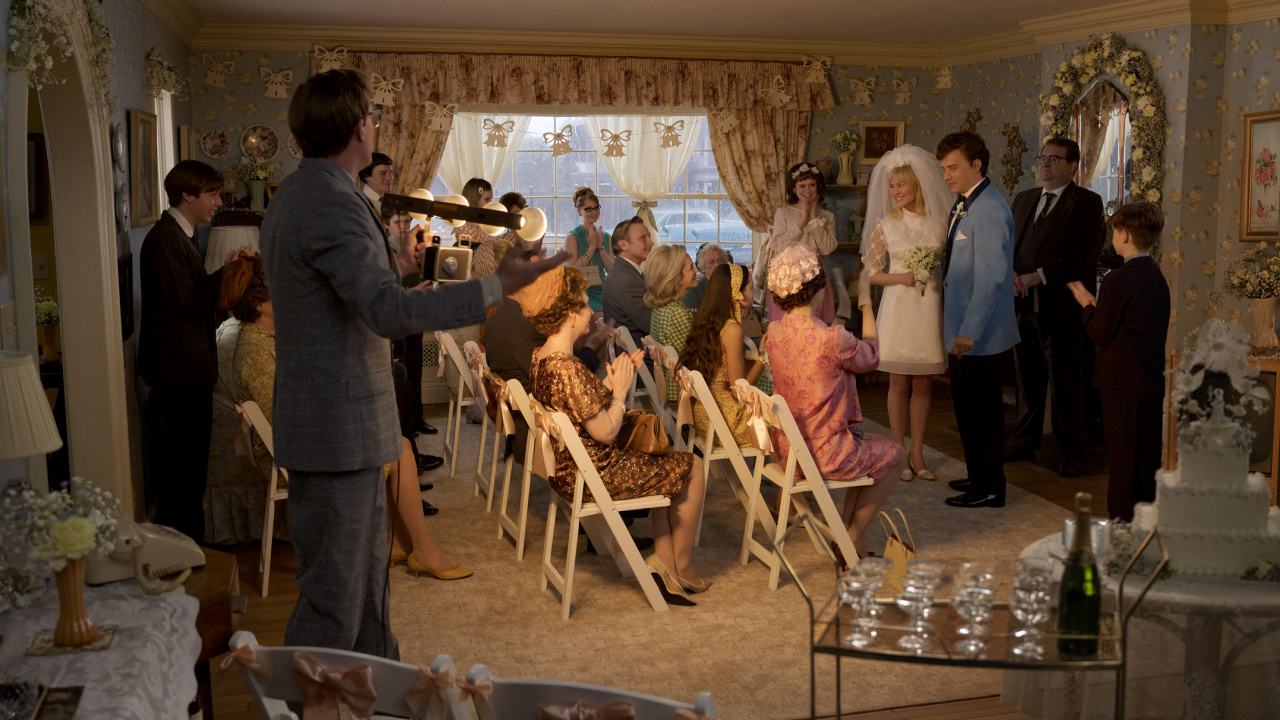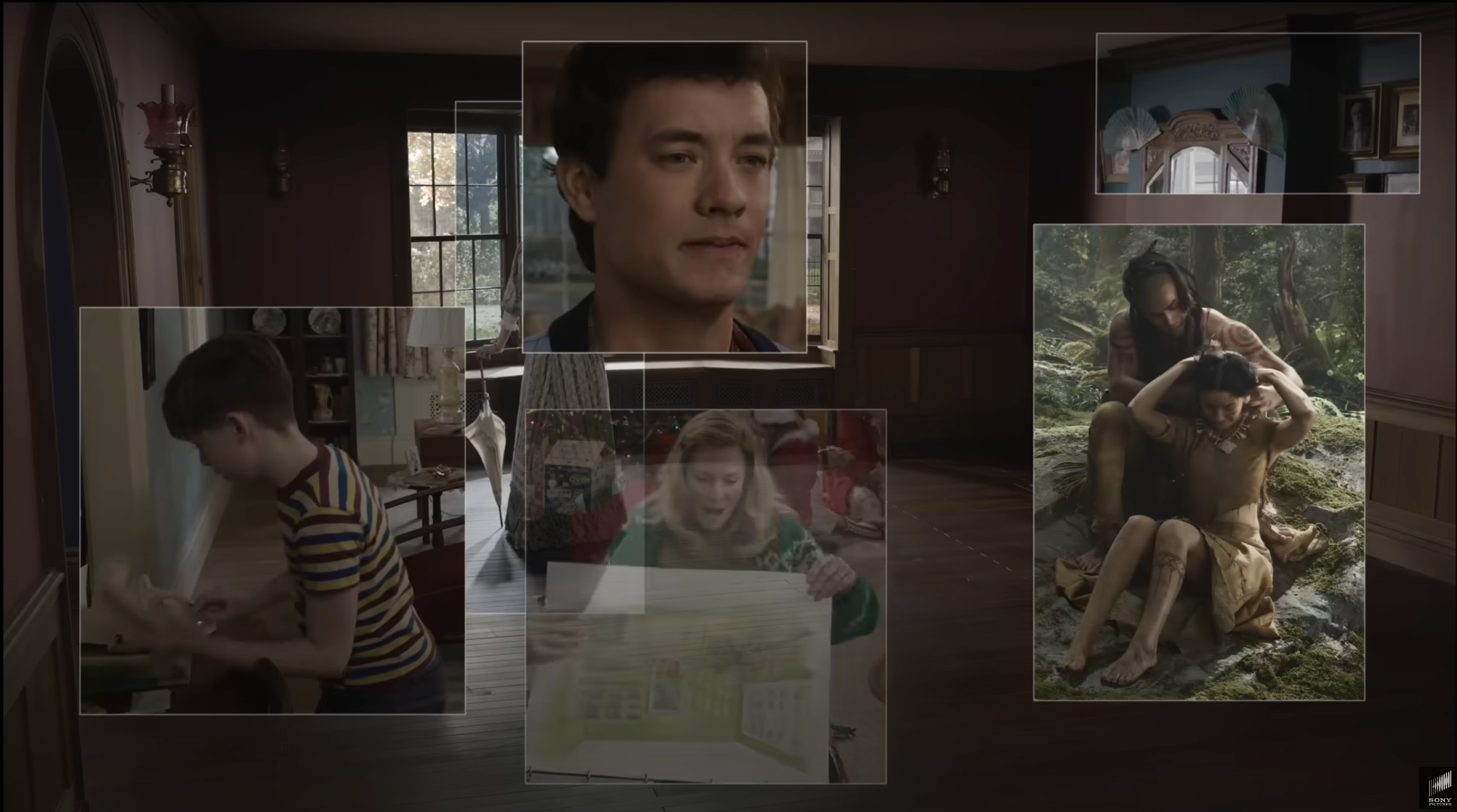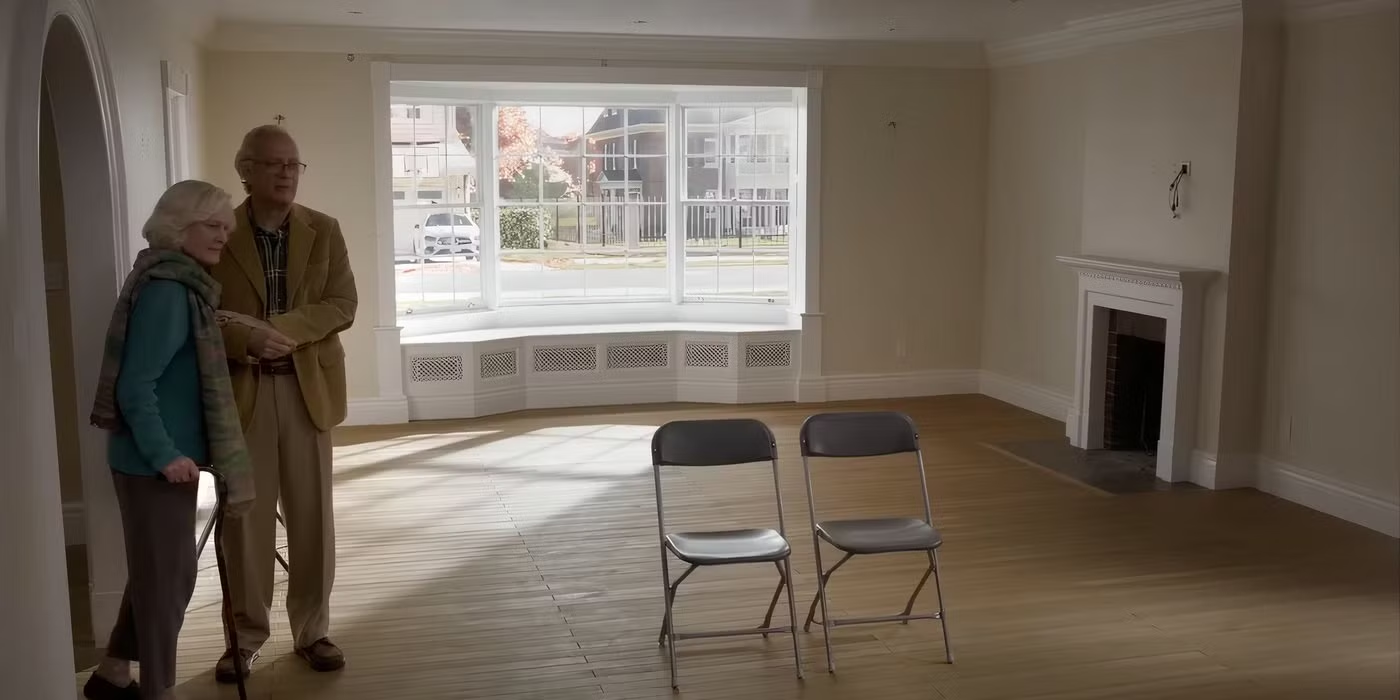
Directed by: Robert Zemeckis
Screenplay by: Eric Roth, Robert Zemeckis
Based on: Here by Richard McGuire
Produced by: Robert Zemeckis, Jack Rapke, Derek Hogue, Bill Block
Starring: Tom Hanks, Robin Wright, Paul Bettany, Kelly Reilly
Cinematography: Don Burgess
Edited by: Jesse Goldsmith
Music by: Alan Silvestri
Release date: November 1, 2024 (United States)
Running time: 104 minutes
Country: United States
Language: English
Budget: $45–50 million
Box office: $11.4 million
Review by Kabir Malhotra
Robert Zemeckis has certainly earned his place as a titan of Boomer cinema. His filmography boasts a litany of classics - Back to the Future, Cast Away, Forrest Gump, etc. - that are endlessly rewatched on cable by beer-drunk fathers lounging in their La-Z-Boys. One thing, however, that has always set Zemeckis apart is his willingness to experiment with new technology. Much has been said about the uncanny animation of his Polar Express and, more recently, his late career has been split between CGI corporate slop (Pinocchio, The Witches) and the earnest, strange musing of a man looking back on his life (Welcome to Marwen). Here, Zemeckis' 22nd feature film, fits squarely into the latter category.
Adapted from a graphic novel written by Richard McGuire, Here tells the millenia-spanning story of a single plot of land in Pennsylvania. The central conceit of the film is that it is told through one shot.

The titular "HERE"
The frame remains static for the majority of the film's runtime, affixed to one point in space, making its ultimate subject (as with all films) time. The main thrust of the film's narrative is the slow dissolution of the marriage between Richard Young (Tom Hanks) and Margaret Young (Robin Wright), as well as their evolving relationship to their house (the titular Here). Other inhabitants of the land include a cadre of dinosaurs who are eventually wiped out, indigenous people who occupied the land before the arrival of the British colonists, a black family who move in after the Youngs leave, the estate of Benjamin Franklin's illegitimate son, and the inventor of the La-Z-Boy recliner.
The themes at play are simple and familiar - doomed, hollow domesticity, the cycle of family trauma, various swipes at critiquing/exposing/defending America, and the enduring power of love. These are all quite in line with Zemeckis' brand of humanism, and are brought to life by veteran actors and a serviceable script, which create a cradle for his formal experimentation. The time periods not expressly connected to the Young family, however, range from being fun (dinosaurs, Benjamin Franklin) to pointless (La-Z-Boy) to tone deaf (thinking specifically here of a shoe-horned in scene where the black family who moves in after the Youngs explain to their teenage son what to do during a traffic stop). Several of these subplots point to American history - there are hints of Zemeckis' reckoning with the colonial past implicit to the founding of America - but it never seems to resolve into anything concrete. I did see a bit of Forrest Gump in the film, albeit inverted; in Forrest Gump we watch a man stumble through American history. In Here, historical events are far away, beamed into the house via the television. In Forrest Gump, the characters create history without even trying. In Here, history is something that happens to and around the characters, but that they have no control over.
It is through form that the film really comes alive. The camera only moves one time (at the end, that classic Bressonian trick), but Zemeckis communicates between the time periods by including panels that function as windows into the past or future.

The panels in action
This device lends the film a zip and a bounce, the ability to jump smoothly from timeline to timeline without breaking the viewer's sense of spatial immersion. The form in these sequences feels as if it is trying to reckon with the visual language of the Internet. Much the same way that "dueting" a TikTok creates a new meaning out of the conversation between two videos (thesis + antithesis = synthesis), Zemeckis' mixing of the film's different timelines creates meaning by rhyming the juxtaposed images. One can imagine that the way the viewer's attention is split between the main scene and a window into another timeline in Here probably functions quite similarly to a perma-fried iPad kid watching a video with Family Guy clips on the side. Consciously or not, Zemeckis recognizes that it's necessary to push the form away from traditional modes of viewing towards something reflective of the media environment we exist in today. It also allows Zemeckis to create more complex compositions (strangely enough I was reminded of Tsai Ming-Liang's Walker series while watching). Less successfully, Zemeckis plays with AI to alter the age of his actors which is a bit off-putting at times but I'll give him props for trying. I think if the actors he was working with weren't as good, the de-aging would've bothered me more.

Tom Hanks and Robin Wright in HERE
While Here is retreading familiar thematic territory and could be fairly derided for being overly-sentimental or nostalgic, I found its earnestness to be its most redeeming quality. It is earnest in its attempts at experimentation, at pushing the form forward, but also in the tenderness of its message and the bittersweet truth that love is the only thing that can survive the neverending march of time.